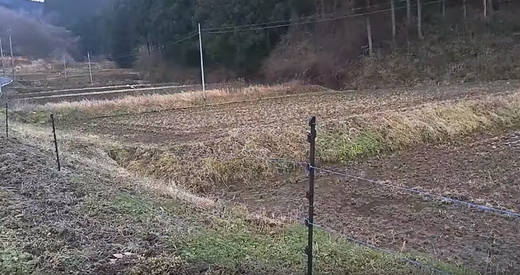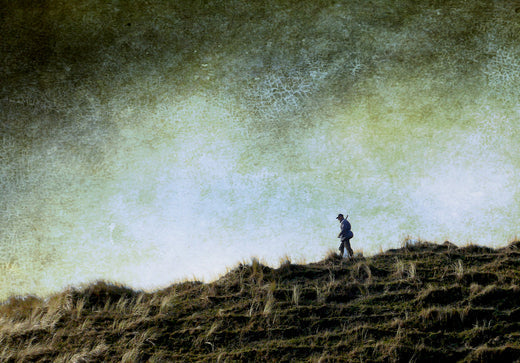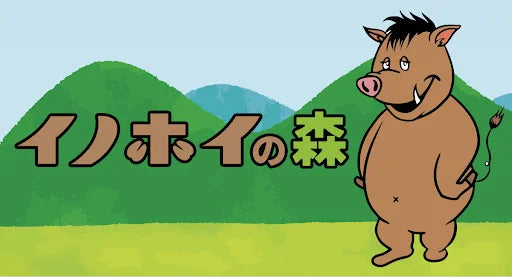About 80% of forest damage caused by wild birds and animals is caused by deer. Due to the increase in deer population and the expansion of their habitat, forests are suffering serious damage.
Details of the damage include feeding damage to trees, stripping of bark, decline or disappearance of understory vegetation due to feeding damage, and bare ground. About 20% of the forests in Japan have been damaged by deer, and the damage area is said to reach about 6,000 hectares (about 1,200 times the size of Tokyo Dome).
Deer are highly fertile and will give birth almost every year if the environment is favorable. It is said that if there is no capture, the population will increase at an annual rate of about 20%, and the population will double in four to five years.
For this reason, the Ministry of the Environment and the Ministry of Agriculture, Forestry and Fisheries have set a goal of halving the population of deer (and wild boars) over the next 10 years. It is implemented by prefectures.
Types of support for wildlife damage control in forests
There are the following projects as support for wildlife damage countermeasures for forests implemented by the national government.1. Emergency measures for forest damage caused by deer
This is a project to implement exemplary systematic capture and control mainly by those involved in the forestry industry.A: Emergency measures to prevent deer forest damage
A council consisting of multiple municipalities and forest management offices formulates and implements deer damage control plans. It is a project to carry out prevention activities such as trapping and installation of protective fences in cooperation with the area.
In addition, in areas where new deer invasions are feared or areas where deer population density is increasing, we will strengthen the deer monitoring system by conducting behavior tracking surveys using GPS collars and monitoring systems using automatic cameras. It also aims to strengthen Click here for Inohoi's recommended automatic shooting cameras>>
B: Research on promotion of deer damage countermeasures
This is a project to investigate and analyze the risk of damage caused by deer in forests, and to consider necessary measures. It is entrusted from the country to a private organization with a consignment fee.
2. Forest environment conservation and improvement project
For the purpose of creating and preserving healthy forests, support is provided for projects that prevent damage to forests caused by wild birds and animals, and develop and preserve ancillary facilities (such as intrusion prevention fences) to control the movement of wild birds and animals.
In addition, in damaged forests that have been eaten by deer, projects that lure deer with bait and capture them with traps will be supported. It is implemented mainly by prefectures, municipalities, forest owners, forestry associations, and forest improvement corporations.
3. Wildlife Damage Prevention Comprehensive Measures Grant
Support will be provided for community-wide efforts to prevent damage led by municipalities, such as the installation of fences to prevent deer and other wildlife from entering, and direct funding for capture activities. By applying for a business plan, etc., the target group will receive grants from the national government through each prefecture. This article provides detailed information .
4. Next-generation forestry foundation building subsidy (of which, forest and forestry regeneration foundation building subsidy)
Support will be provided for damage prevention measures taken by prefectures, municipalities, etc. in consideration of the damage situation and according to the actual situation of the region. The subsidy supports various efforts to develop infrastructure for maintaining local forests and their utilization, as well as to promote the forestry and timber industries. Wildlife damage control projects for the protection of forest resources are also covered. increase.
5. Multi-functioning measures for forests and mountain villages
Satoyama forests are forests that have been maintained and managed for a long time by local residents, and have been maintained and managed for a long time. Therefore, the Forestry Agency provides subsidies to support activities for the conservation and management of satoyama forests and the utilization of resources, which are carried out in cooperation with local residents, forest owners, and forest owners.
Assistance is also provided for the purchase and installation of equipment and materials necessary for carrying out activities. For example, 1/2 of the necessary amount is provided for the purchase of traps for catching wild birds and animals such as deer. will be
In order to receive support, it is necessary to establish an activity organization, and the organization must consist of people (three or more) who meet the actual situation of the area, such as local residents and forest owners. Forests eligible for subsidies are forests for which no forest management plan has been formulated at the time of activity. In addition, it is necessary to prepare a plan that describes the name of the organization, location, background and outline of the activity, three-year activity plan, activity details for each fiscal year, plan drawing, and commissioned details.
Once these preparations are complete, the process is to apply for support to the regional council.
summary
In order to contribute to the reduction of forest damage caused by deer, various types of assistance such as those mentioned above are being implemented. The above is government support, and I think that the content and scale will change depending on the year and the region that receives the subsidy. I would appreciate it if you could confirm.
Inohoi also accepts requests for quotations necessary for purchasing traps at any time. Please feel free to make a request using this form .

 箱罠
箱罠
 くくり罠
くくり罠
 パーツ類
パーツ類
 電気柵
電気柵
 自作キット
自作キット
 防獣グッズ
防獣グッズ
 監視カメラ
監視カメラ




![Fare Asahi Shiki Box Trap Big Size [Double Door]](http://inohoi.jp/cdn/shop/products/20180504_5c53af_300x300_crop_center.progressive.jpg?v=1597991101)
![Fare Asahi Shiki Box Trap Big Size [Single Door]](http://inohoi.jp/cdn/shop/products/20180506_c693cd_e969a0f5-abac-49ee-8f2b-6de0f385e3fd_300x300_crop_center.progressive.jpg?v=1597991123)
![Fare Asahishiki box trap medium size [single door] wire mesh specification](http://inohoi.jp/cdn/shop/files/main_300x300_crop_center.progressive.png.jpg?v=1720764665)
![Fare Asahi Shiki Box Trap Medium Size [Single Door] Deep Type](http://inohoi.jp/cdn/shop/files/f9d83dbb4ed93f76265b8cd23c07b474_300x300_crop_center.progressive.jpg?v=1726117508)
![Fare Asahi Shiki Small Animal Box Trap Small Size [Single Door]](http://inohoi.jp/cdn/shop/files/asahi-small02_071bc964-fa6b-4587-ae52-d15e905cc2c7_300x300_crop_center.progressive.png.jpg?v=1727766085)
![Fare Asahi Shiki Monkey Box Trap [Single Door]](http://inohoi.jp/cdn/shop/products/2021-07-21T093626.944_300x300_crop_center.progressive.jpg?v=1628140528)
 box trap
box trap
 tying trap
tying trap
 enclosure trap
enclosure trap
 Prevention and avoidance goods
Prevention and avoidance goods
 electric fence
electric fence
 trap surveillance camera
trap surveillance camera
 transportation goods
transportation goods
 Trap detection sensor
Trap detection sensor
 hunting supplies
hunting supplies
 hunting books
hunting books
 Anti-bird goods
Anti-bird goods
 Agricultural materials/machinery
Agricultural materials/machinery
 boar
boar
 deer
deer
 Kyon
Kyon
 monkey
monkey
 raccoon
raccoon
 Badger
Badger
 palm civet
palm civet
 raccoon dog
raccoon dog
 nutria
nutria
 mouse or rat
mouse or rat
 Mole
Mole
 bear
bear
 pigeon
pigeon
 Crow
Crow







